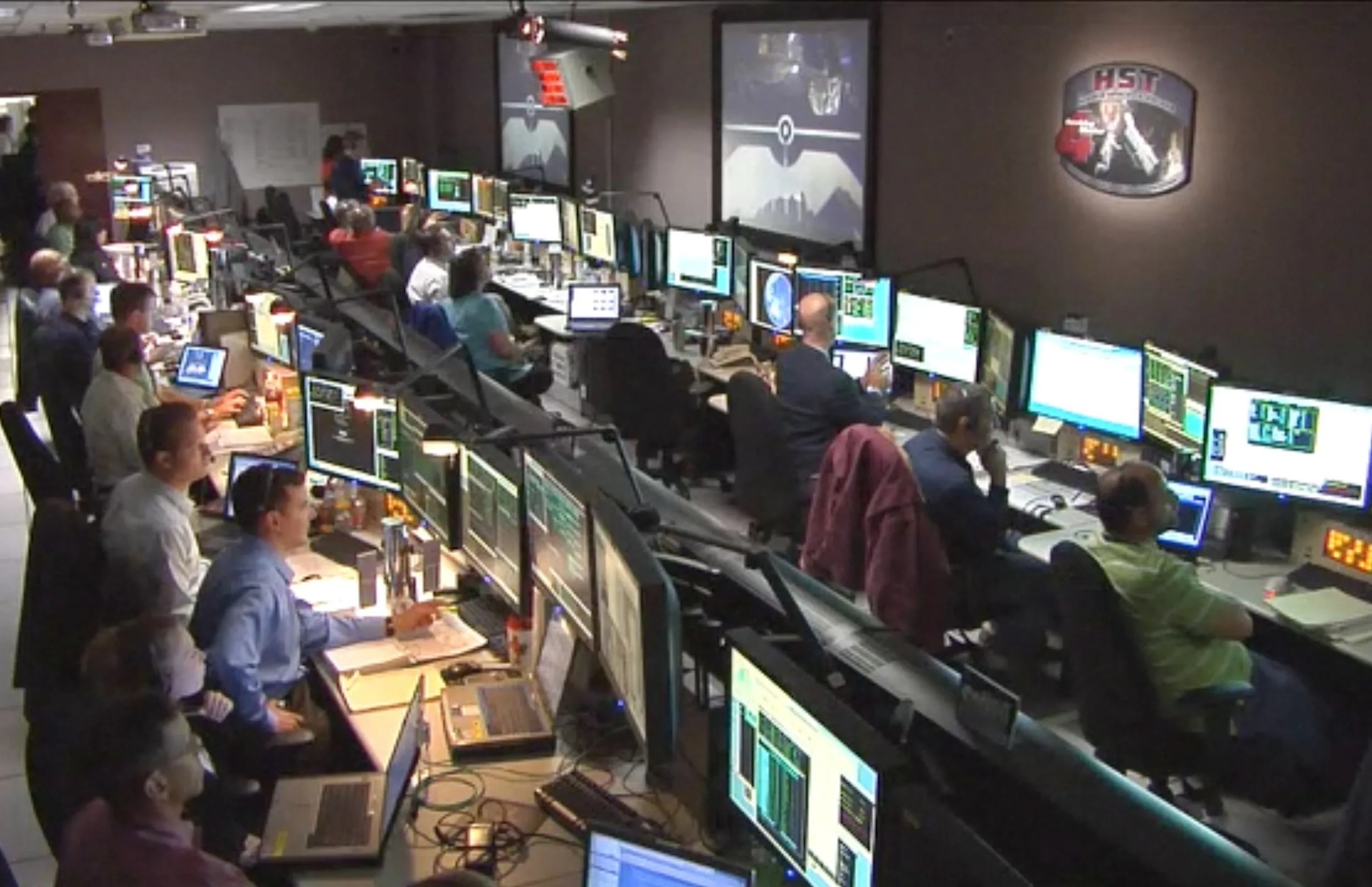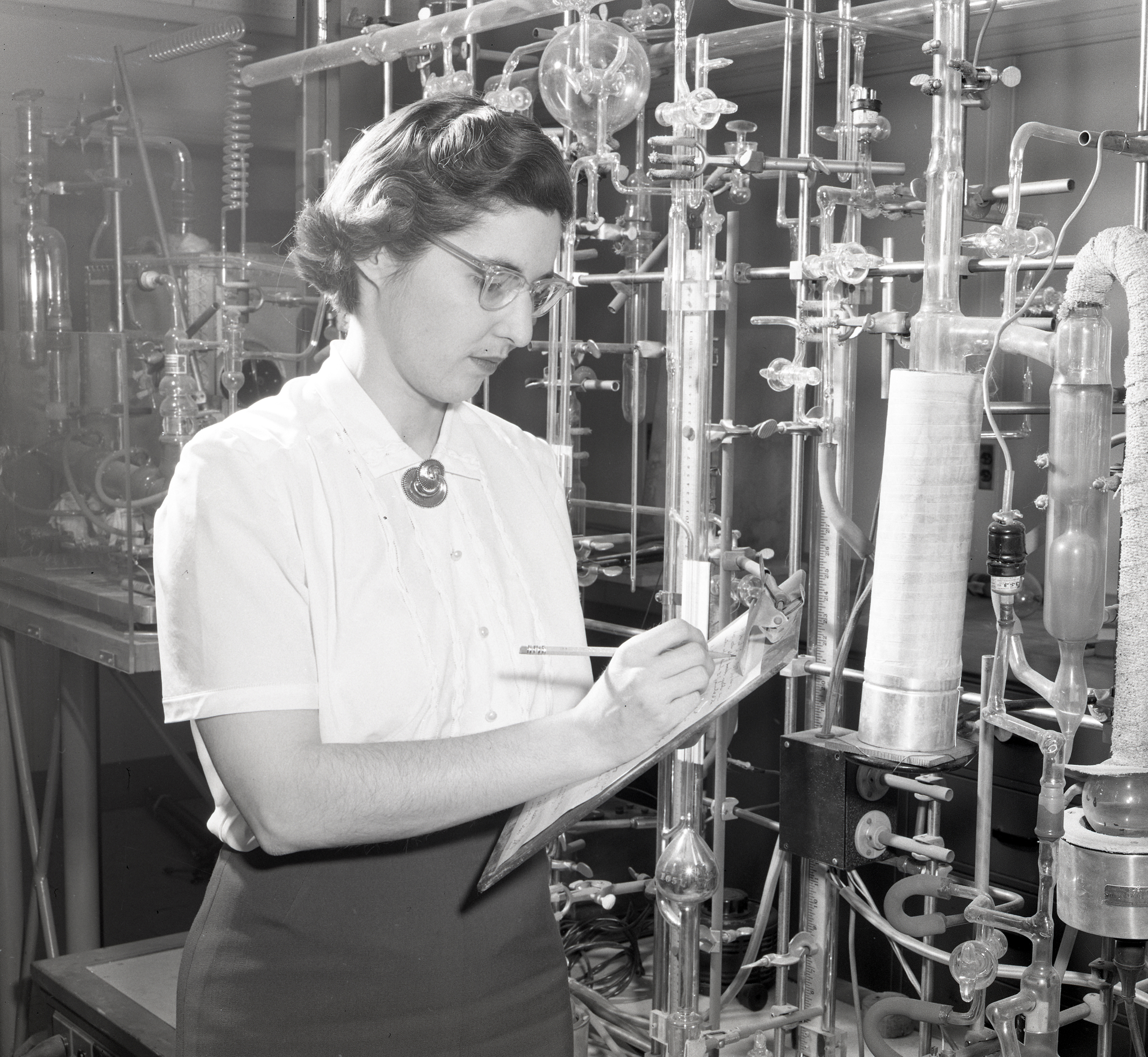1997
Servicing Mission 2
February 11-21, 1997
The second servicing mission extended the range of wavelengths Hubble can see with the installation of two new instruments and increased the observatory's efficiency and performance.

February 11, 1997 – Launch of Servicing Mission 2
At 3:35 a.m. ET, the Space Shuttle Discovery launched from Kennedy Space Center in Florida on the second Hubble servicing mission.

February 13, 1997 – Hubble Captured and Secured in the Cargo Bay
The crew used Discovery's robotic arm to gently dock Hubble in the shuttle’s cargo bay.

February 14, 1997 – First Spacewalk
Astronauts Mark Lee and Steven Smith embarked on the first spacewalk to service Hubble. They removed two scientific instruments (the Goddard High Resolution Spectograph and Faint Object Spectograph) and replaced them with the Space Telescope Imaging Spectrograph and Near Infrared Camera and Multi-Object Spectrometer.

February 15, 1997 – Second Spacewalk
Astronauts Gregory Harbaugh and Joseph Tanner began the second spacewalk of the mission. They replaced a degraded Fine Guidance Sensor and a failed Engineering and Science Tape Recorder with new spares, and also installed a new unit called the Optical Control Electronics Enhancement Kit, which further increased the capability of the Fine Guidance Sensor to provide pointing information for the spacecraft and as a scientific instrument for astrometric science.

February 16, 1997 – Third Spacewalk
Astronauts Mark Lee and Steven Smith started the third spacewalk. They removed and replaced a Data Interface Unit on Hubble, as well as replaced an old reel-to-reel style Engineering and Science Tape Recorder with a new digital Solid State Recorder that allowed simultaneous recording and playback of data. In addition, they changed out one of four Reaction Wheel Assembly units that use spin momentum to move the telescope toward a target and maintain it in a stable position.

February 17, 1997 – Fourth Spacewalk
Astronauts Gregory Harbaugh and Joseph Tanner embarked on the fourth spacewalk of the mission. They replaced a Solar Array Drive Electronics package, which controls the positioning of Hubble's solar arrays, and also replaced covers over Hubble's magnetometers. In addition, new thermal blankets were installed over two areas of degraded insulation around the light shield portion of the telescope.

February 18, 1997 – Final Spacewalk
Astronauts Mark Lee and Steven Smith completed the fifth and final spacewalk of the second servicing mission. They attached several thermal insulation blankets to the telescope on areas which contain key data processing, electronics, and scientific instrument telemetry packages.

February 21, 1997 – Servicing Mission 2 Comes to a Close
The Hubble Space Telescope's second servicing mission comes to an end. Hubble returned to its orbit as an improved observatory, and the Space Shuttle Discovery safely landed back at Kennedy Space Center.










